Carl Zimmer's Blog, page 118
July 10, 2009
Disappearing The Science News
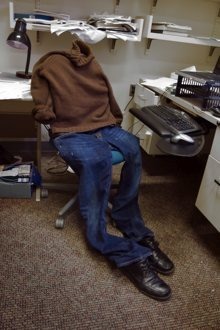 I have some hope for a happy coexistence between blogs about science and older forms of media. I don't think blogs will ever supplant newspapers and magazines, nor I do I think they're killing them like a parasite destroying its host. In fact, blogs may be able to act as a new kind of quality-control mechanism. I know that not all my colleagues on the old-media side of the divide are so optimistic. You'd be hard-pressed to find a snootier distillation of their scorn than something Independent sc
I have some hope for a happy coexistence between blogs about science and older forms of media. I don't think blogs will ever supplant newspapers and magazines, nor I do I think they're killing them like a parasite destroying its host. In fact, blogs may be able to act as a new kind of quality-control mechanism. I know that not all my colleagues on the old-media side of the divide are so optimistic. You'd be hard-pressed to find a snootier distillation of their scorn than something Independent sc
July 8, 2009
A Tapeworm To Call My Own

Long after I'm dead, there will be stingrays swimming the Arafura Sea infested with tapeworms that bear my name.
There are about 1.8 million species with names, out of an estimated 8 to 9 million species in total. In 2007 alone, scientists named 18516 new species. Naming a species is actually the final step in a long, slow journey. It starts with the discovery of an organism that looks like it just might not belong to any known species. Scientists then search the scientific literature to see if
July 7, 2009
Microcosm Week: Dreaming of a Complete Solution to Life
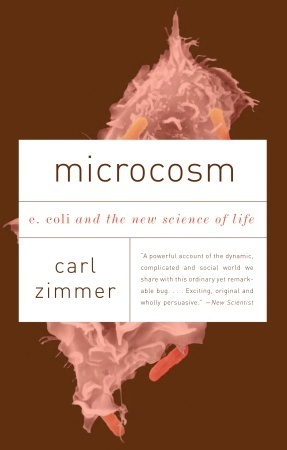 Last week, three teams of scientists published three massive studies in Nature on the genes behind schizophrenia. They scanned thousands of people to find variants of genes that tended to show up more in people with schizophrenia than in those without it. And they found a heap of genes. There are thousands of different variants that each may raise your risk of schizophrenia by a tiny amount.
Last week, three teams of scientists published three massive studies in Nature on the genes behind schizophrenia. They scanned thousands of people to find variants of genes that tended to show up more in people with schizophrenia than in those without it. And they found a heap of genes. There are thousands of different variants that each may raise your risk of schizophrenia by a tiny amount.
Nicholas Wade, a veteran genetics reporter at the New York Times, has been following the quest to trace di
July 6, 2009
Microcosm Week: There's Evolution In My Cookie Dough
 Next week the paperback edition of my book Microcosm: E. Coli and the New Science of Life will be published. In the book I approach E. coli as a microscopic oracle that can reveal great secrets about how life in general works. This is not actually a rhetorical stretch; over the past century scientists have put a spectacular amount of work into understanding this bug. And, as I write in the book, E. coli continues to offer surprises. In celebration of the arrival of the paperback Microcosm, I'm g
Next week the paperback edition of my book Microcosm: E. Coli and the New Science of Life will be published. In the book I approach E. coli as a microscopic oracle that can reveal great secrets about how life in general works. This is not actually a rhetorical stretch; over the past century scientists have put a spectacular amount of work into understanding this bug. And, as I write in the book, E. coli continues to offer surprises. In celebration of the arrival of the paperback Microcosm, I'm g
July 5, 2009
The Tangled Bank: Your Questions on the Nature of the Book
In response to my post on the endorsements for The Tangled Bank: An Introduction to Evolution, a lot of commenters had questions and reactions. I've responded in the comment thread here.
July 4, 2009
Let the Stars and the Ink Guide You Home [Science Tattoos]
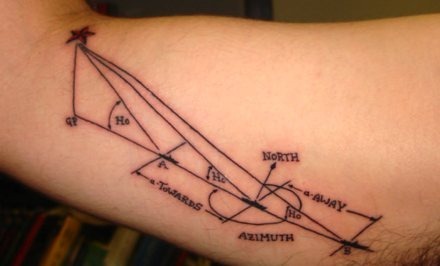 Marc Morency, Quartermaster 1st class, USN, writes: "While I am by no means a scientist, I have been fortunate enough to be paid by the government to get ships from pt. A to pt. B serving in the US Navy as a Quartermaster. I was drawn to the navigation when I joined. In my opinion, it is the only job in the military that is both a science and an art Celestial navigation has been something I have become profoundly interested in since I joined ten years ago. In this age of GPS, it is, in my op
Marc Morency, Quartermaster 1st class, USN, writes: "While I am by no means a scientist, I have been fortunate enough to be paid by the government to get ships from pt. A to pt. B serving in the US Navy as a Quartermaster. I was drawn to the navigation when I joined. In my opinion, it is the only job in the military that is both a science and an art Celestial navigation has been something I have become profoundly interested in since I joined ten years ago. In this age of GPS, it is, in my op
July 2, 2009
The Tangled Bank: "The Best"–E.O. Wilson
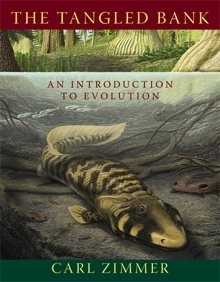 My publisher has been sending out copies of The Tangled Bank: An Introduction to Evolution to some leading biologists for possible endorsements when it comes out in October. Here's what we're hearing back so far…
My publisher has been sending out copies of The Tangled Bank: An Introduction to Evolution to some leading biologists for possible endorsements when it comes out in October. Here's what we're hearing back so far…
"The Tangled Bank is the best written and best illustrated introduction to evolution of the Darwin centennial decade, and also the most conversant with ongoing research. It is excellent for students, the general public, and even other biologists." –Edward O. Wilson, Harvard University, a
June 29, 2009
Radio: The Takeaway Learns to Speak Firefly
I will be on the public radio show The Takeaway at 720 am EST Tuesday to talk about fireflies. I'll update this post with a link to the podcast when it's online.
Fireflies: The Invertebrate Opera
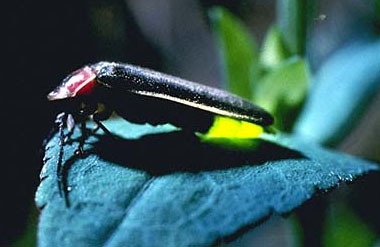 Fireflies are the topic of my story on the cover of the New York Times science section tomorrow. It's the result of a visit I paid last Friday evening to a meadow in Massachusetts, where I listened to Sara Lewis of Tufts University explain the sultry, complex tale of sex, deception, and death that was playing out in front of me.
Fireflies are the topic of my story on the cover of the New York Times science section tomorrow. It's the result of a visit I paid last Friday evening to a meadow in Massachusetts, where I listened to Sara Lewis of Tufts University explain the sultry, complex tale of sex, deception, and death that was playing out in front of me.
I first got to know Lewis's work last summer, when I decided I wanted to include fireflies in my next book, The Tangled Bank: An Introduction to Evolution. Lewis co-autho
June 28, 2009
Genomes In Newsweek: Futures Near and Far
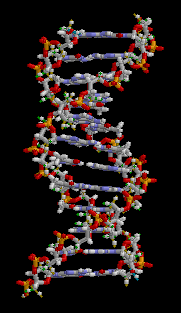 As a science writer, I often find it sobering to read scientific history. Science works slowly, even though we wish it would work in nanosecond breakthroughs.
As a science writer, I often find it sobering to read scientific history. Science works slowly, even though we wish it would work in nanosecond breakthroughs.
In 1913, for example, a Russian scientist named Nikolai Anichkov ran an experiment in which he had egg yolks fed to rabbits. On this cholesterol-heavy diet the rabbits developed atherosclerosis. The more cholesterol the rabbits ate, the bigger the deposits on their blood vessels became. It was a tremendous discovery, considered by some one



